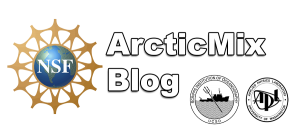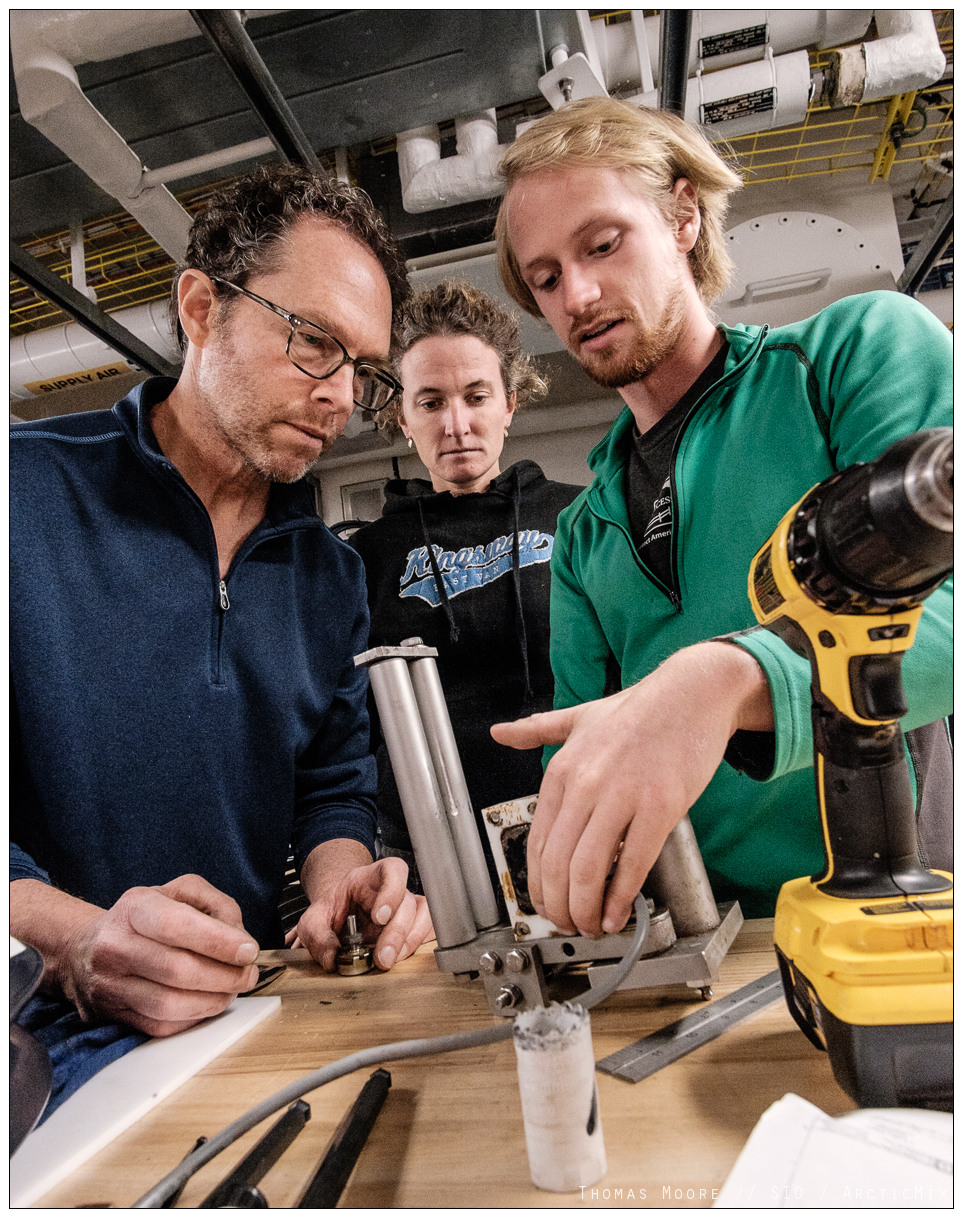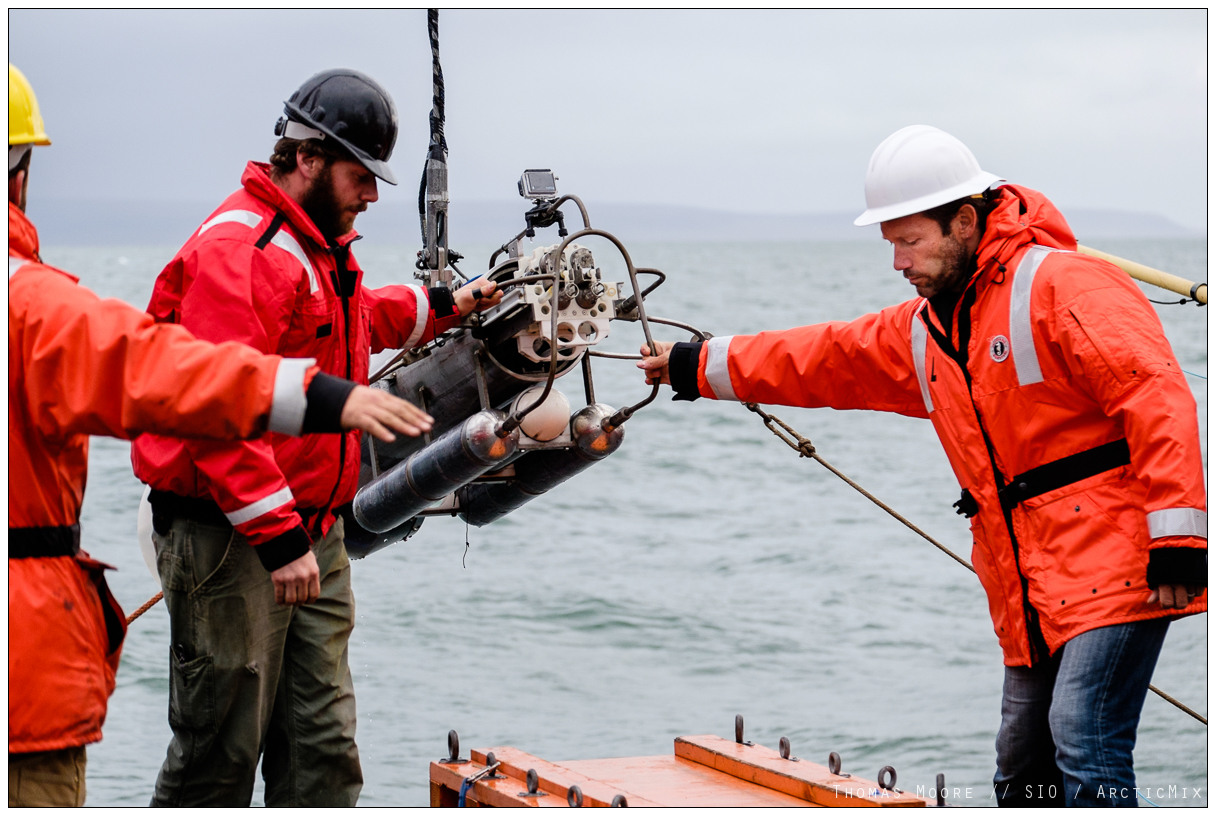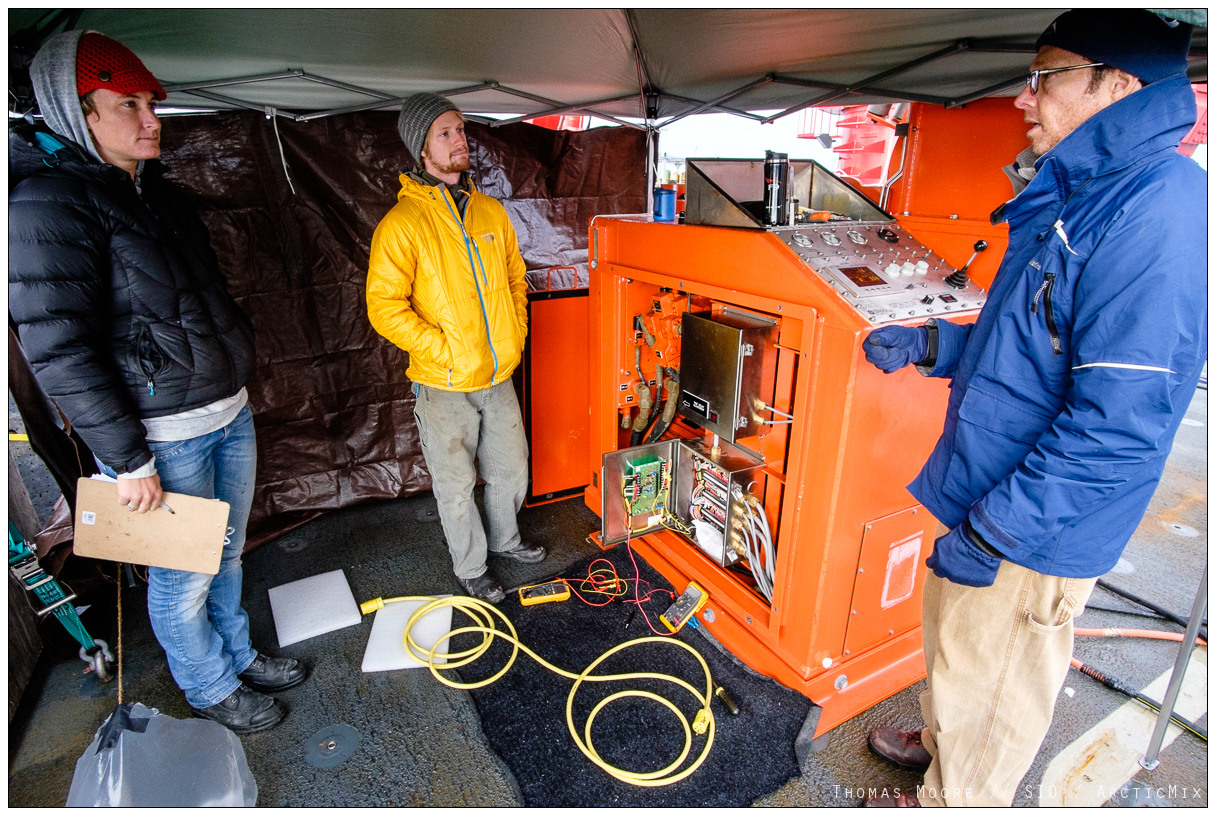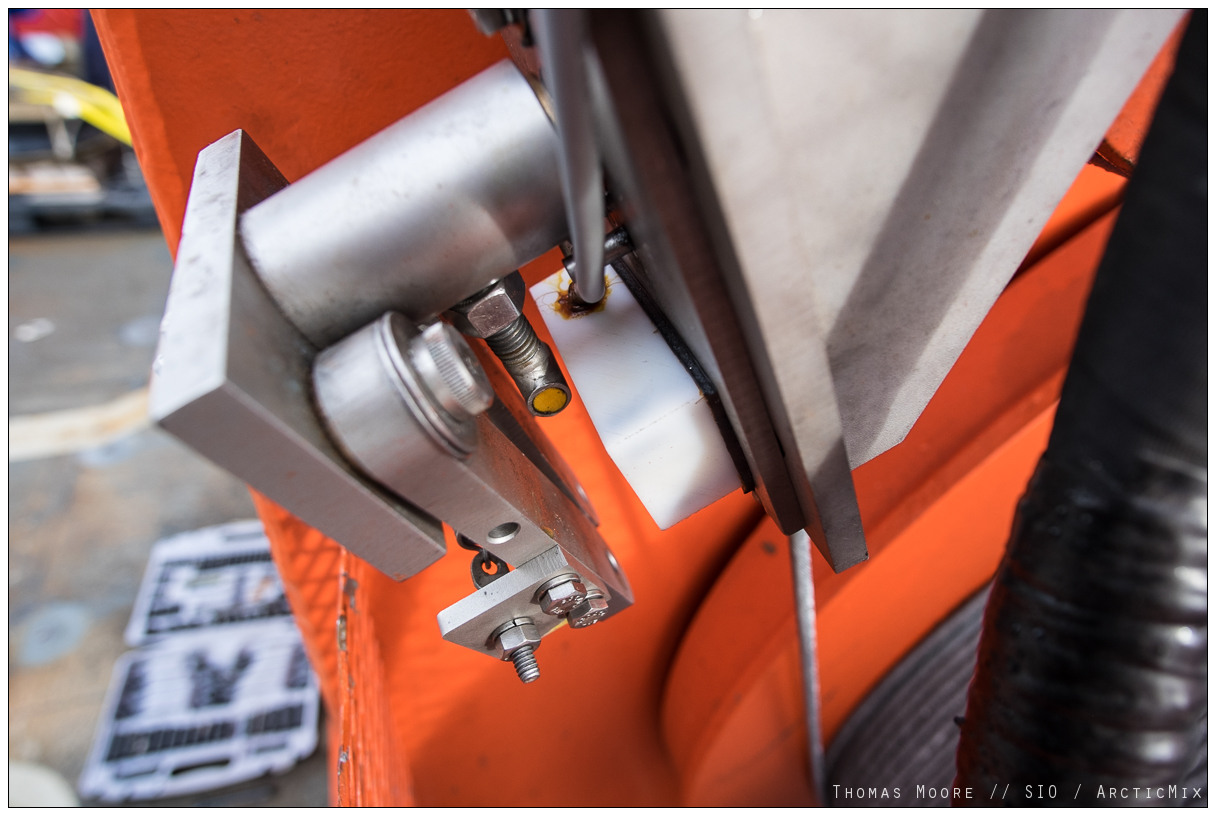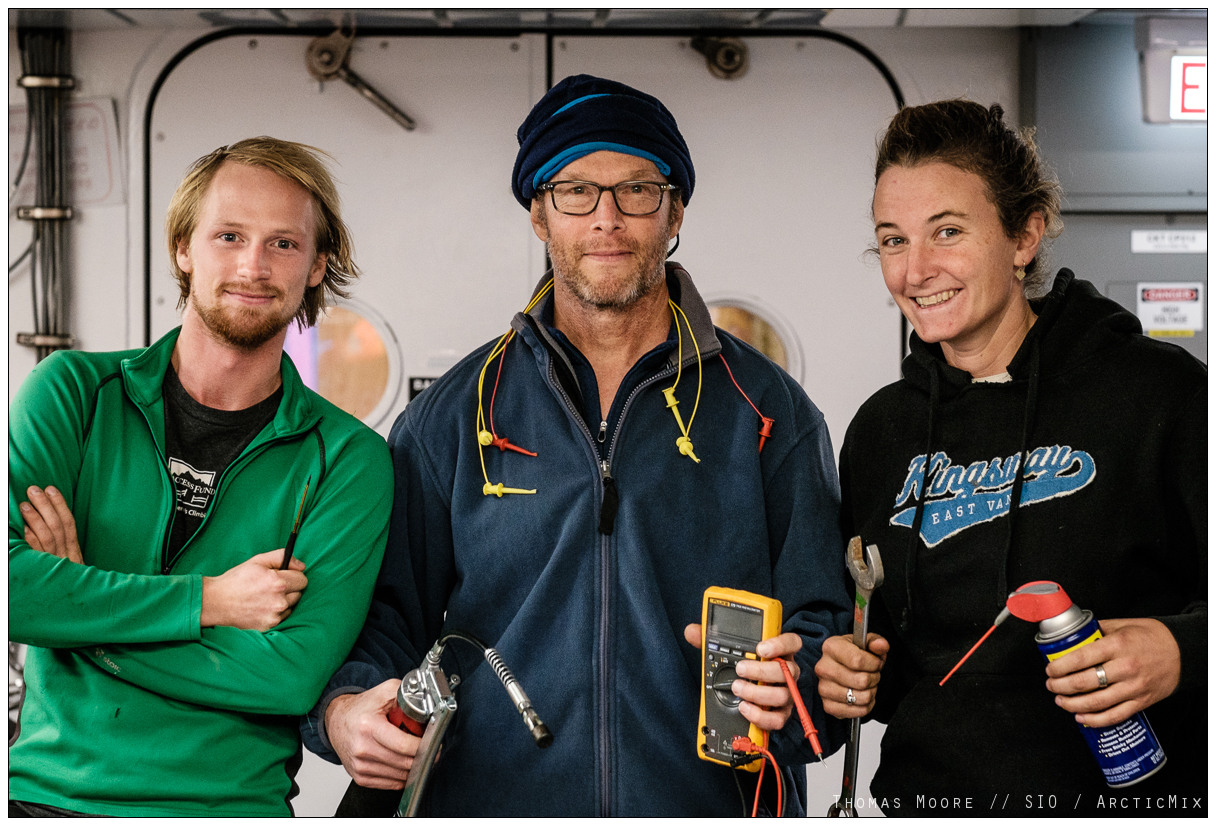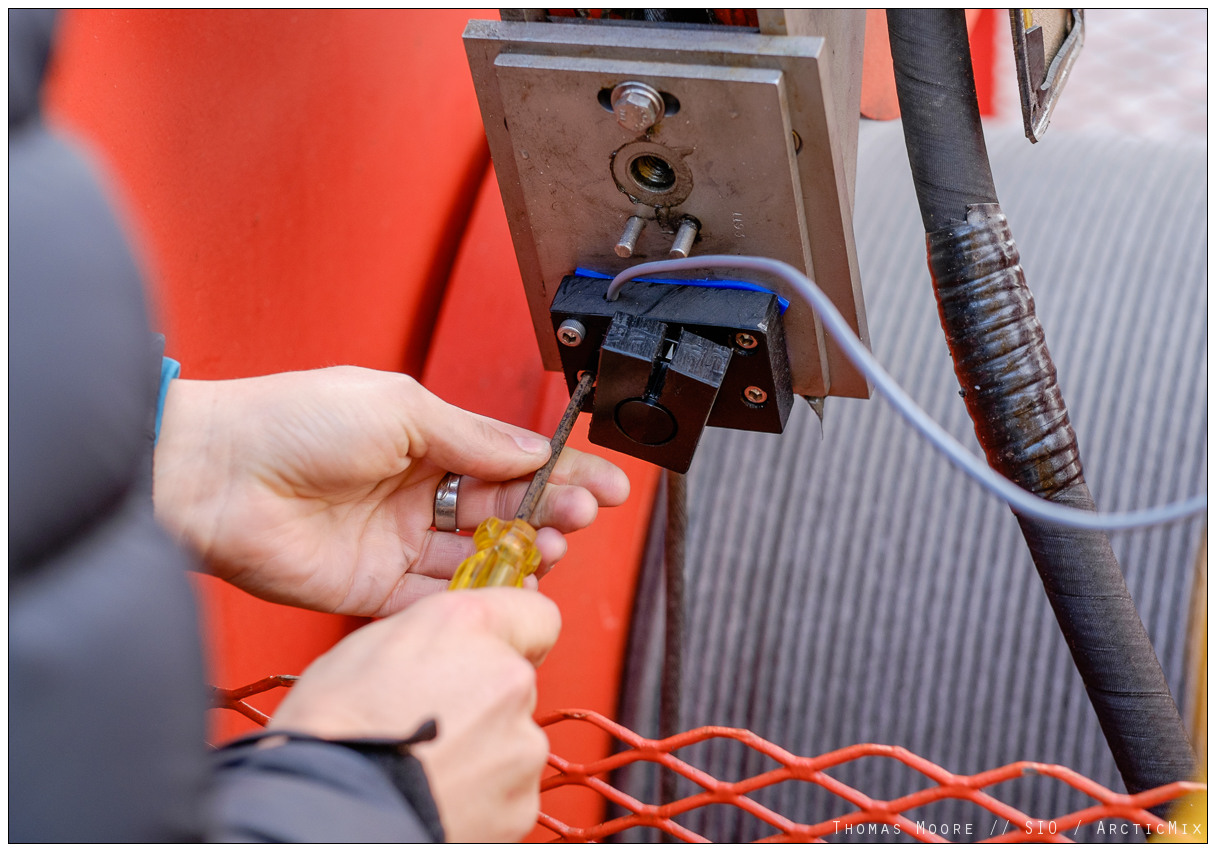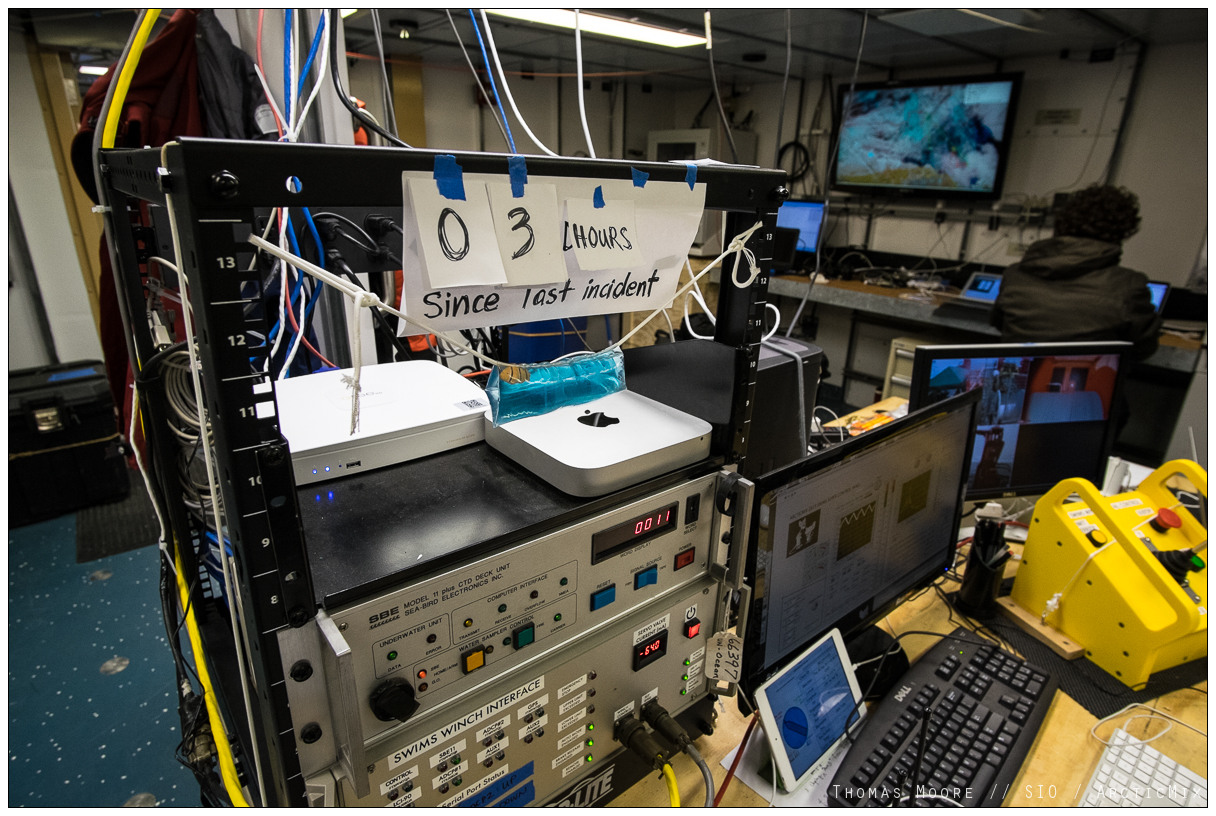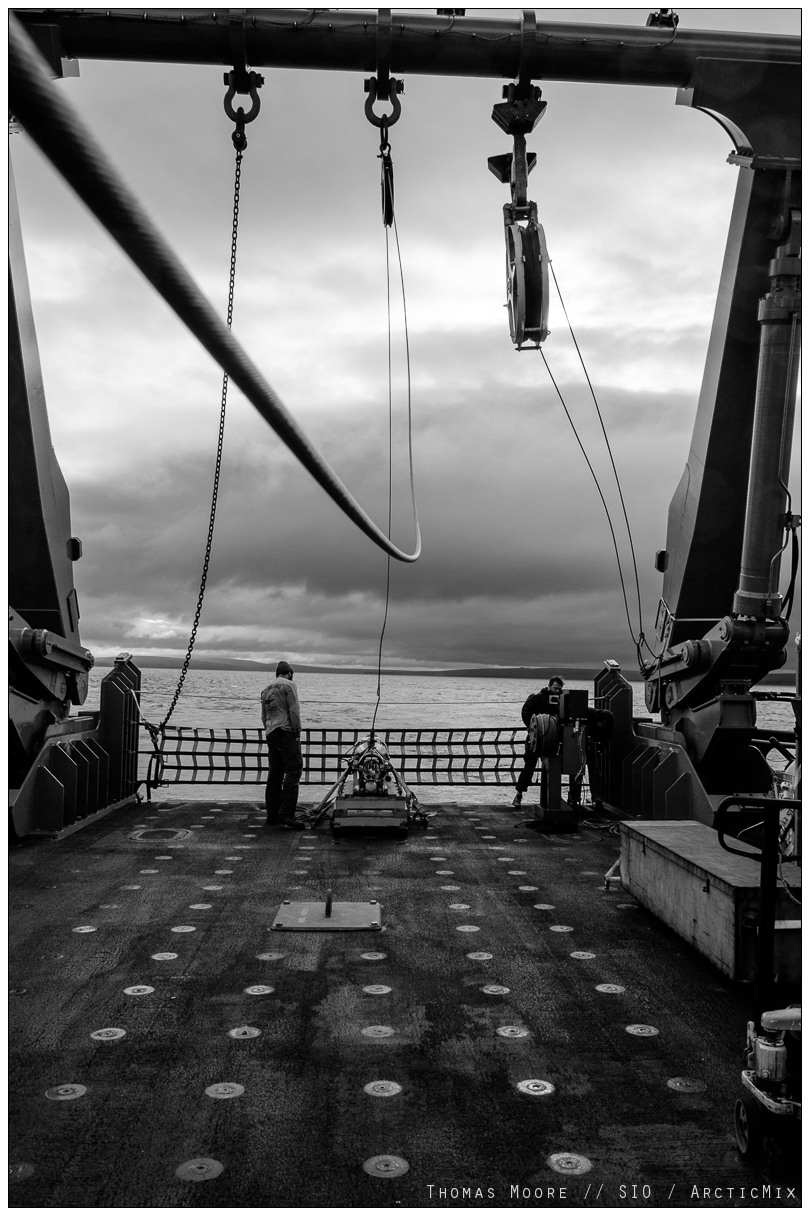Making scientific observations at sea is by definition difficult and unpredictable and this is especially true north of the Arctic circle.
In a place like the Beaufort Sea, a marginal sea of the Arctic Ocean, the cold and extreme remoteness combine with the typical ocean challenges of corrosive salt-water, driving wind, and the stress and strain of violent motion to test equipment beyond the usual limits. A critical bit of machinery or electronics that would never ever fail back on dry land is basically guaranteed to do so somehow, somewhere on an oceanographic research cruise.
To guard against this a team like ArcticMix brings spare parts, lots and lots of spare parts, and tools and schematics and the kitchen sink. A high degree of redundancy to cover any and all contingencies is the rule and any exceptions can risk bringing data collection operations to a grinding halt. There always needs to be a backup plan.
With the planning, logistics, and operational effort for an oceanographic voyage often taking years, and every minute of time aboard being so costly, any equipment failures can become lost opportunities for science that every expedition works extremely hard to minimise. All the spares in the warehouse won’t save any scientific skin without a key catalyst – a team of experienced engineers, team “plan B”.
Wire runs all through the Sikuliaq. The ArcticMix team have run bundles wherever they fit, reaching out from the science lab and through the “Baltic room” – a sort of a hanger or garage for equipment that leads out onto the back deck. Just starboard of the centerline all the wires meet a special winch dedicated to the SWIMS towed system.
SWIMS, the “Shallow Water Integrated Mapping System”, hangs off it’s winch and is dragged through the upper layers of the ocean like a stone on a fishing line. In this case the line is a 1/3 inch six conductor electromechanical braided cable that carries power to the rig underwater, data back to the scientists on the ship in real time, and keeps the whole show from being snatched by the deep.
SWIMS provides a snapshot of ocean mixing across an ice-free Arctic at an unprecedented resolution, but to do so requires careful and dynamic winching of the towed-body relative to the sea surface. The winch drum needs to spool in and out hundreds of meters of cable neatly and cleanly without any tangles on a tossing, vibrating back deck subject to wind and driving freezing rain. At some point in the dark early hours something goes wrong with a small sensor on the SWIMS winch and the cable takes a skew wrap. The night watch has no choice but to stop operations and reach for the ships phone to wake the engineers from their restless sleep. ArcticMix needs a fix.
Frozen moisture is the arch-nemesis of electronic components and after a determined attempt to resuscitate the faulty part it becomes clear it’s beyond help. Unfortunately this tiny sensor is just one of a cascade of components on a custom winch where packing spares is impractical. There is no overnight shipping to the icy waters of the Beaufort Sea so the ArcticMix engineering team has to do something that is as remarkable as it is simply necessary – manufacture a new precision sensor from scratch with whatever parts and tools they can find aboard R/V Sikuliaq.
A block of black delrin cut to specifications, a 500 Ohm potentiometer, a few globs of Scotchkote, and a whole lot of engineering design experience later and the ArcticMix team has a new sensor for the winch “level-wind”, the guiding hand that keeps the SWIMS cable from looking like the pair of headphones you just found in your backpack. The morning watch heads back out onto the fantail to launch the towed-body into the sea where it will profile the upper ocean layers across the Canada basin.
The Shallow Water Integrated Mapping System provides the ArcticMix scientists with an exclusive view of the the ocean physics in the Beaufort Sea. This oceanographic gadget, unique to the team from the University of Washington and Scripps Institution of Oceanography, will help answer questions about the character of mixing in the story of melting Arctic ice. But without the dedication and technical artistry of the sea-going engineers, skills that keep the wheels of science turning across a rolling sea, we’d be blind to the changes that are coming.
- Thomas Moore, for the ArcticMix team
- Mike Goldin with the new sensor they constructed aboard R/V Sikuliaq.
- The engineering team works on their new sensor.
- Mike Goldin testing the broken sensor.
- Amy Waterhouse tightens things up.
- The broken sensor on the bench.
- SWIMS needs to come home. Ethan Roth and Matthew Alford guide it in.
- The engineering team have built a wind-shelter for their winch work.
- Marian grinding away.
- The level-wind sensor.
- The new sesor test out fine.
- Sam, Mike, and Amy – ArcticMix’s crack engineering team.
- Mike Goldin testing the guts of the SWIMS winch.
- Shallow Water Integrated Mapping System (SWIMS).
- Sam Fletcher and Amy Waterhouse work on the winch.
- Attaching the new sensor to the SWIMS winch.
- 3 hours and counting
- The SWIMS winch is a precision bit of machinery.
- The SWIMS cable leads forward from the winch.

